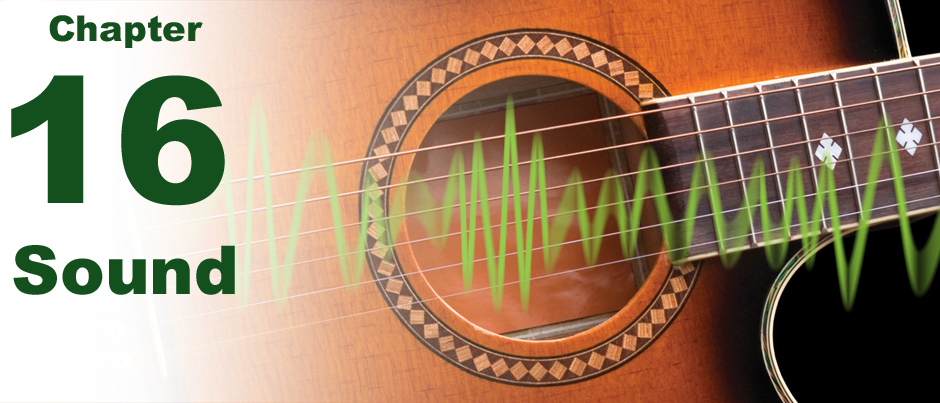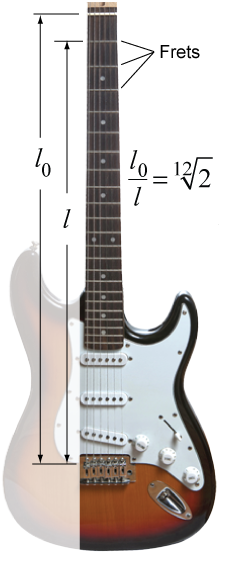 |
Musical instruments are among the very earliest technologies invented by humans. From the brass pots of the traditional Indonesian gamelan to the most ragged-edged electric guitar, all music is created from sounds using patterns of rhythm and pitch. Rhythm is created easily by tapping or plucking in time with the beat. Musical instruments create different pitches using objects that are shaped to vibrate at specific frequencies of sound. The fundamental frequency determines the pitch and the mix of overtones determines the quality or timbre of the sound. 
|
 Stringed instruments such as the guitar control the pitch in three ways. The neck has a series of raised metal frets that provide a precise way to control the vibrating length of each string. By placing a finger just behind different frets the player changes the string’s vibrating length, thereby changing the pitch. The shorter the vibrating length, the higher the pitch. Each successive fret in a modern guitar decreases the length of the vibrating string by the 12th root of two (approximately 1.059). The number 12 comes from the 12 half-steps in the western musical scale—A, A#, B, C, C#, D, D#, E, F, F#, G, and G#. The number 2 arises because the pitch of a note has twice the frequency of a note one octave below it.
Stringed instruments such as the guitar control the pitch in three ways. The neck has a series of raised metal frets that provide a precise way to control the vibrating length of each string. By placing a finger just behind different frets the player changes the string’s vibrating length, thereby changing the pitch. The shorter the vibrating length, the higher the pitch. Each successive fret in a modern guitar decreases the length of the vibrating string by the 12th root of two (approximately 1.059). The number 12 comes from the 12 half-steps in the western musical scale—A, A#, B, C, C#, D, D#, E, F, F#, G, and G#. The number 2 arises because the pitch of a note has twice the frequency of a note one octave below it.
The second method of changing pitch is to change the mass of the strings. The six strings of a guitar each have a different thickness. The low-E string has the greatest mass, and it vibrates 82 times per second (a frequency of 82 Hz) for its lowest note. The high-E string is the thinnest, and its highest playable note (22nd fret) has a frequency of 1,174 Hz.
The third method of controlling pitch is by changing the string tension, such as when a guitar is tuned. The string’s frequency is proportional to the square root of its tension. Tightening a string’s tension by a factor of 4 will raise its frequency by a factor of 2. 
|
| |
|

